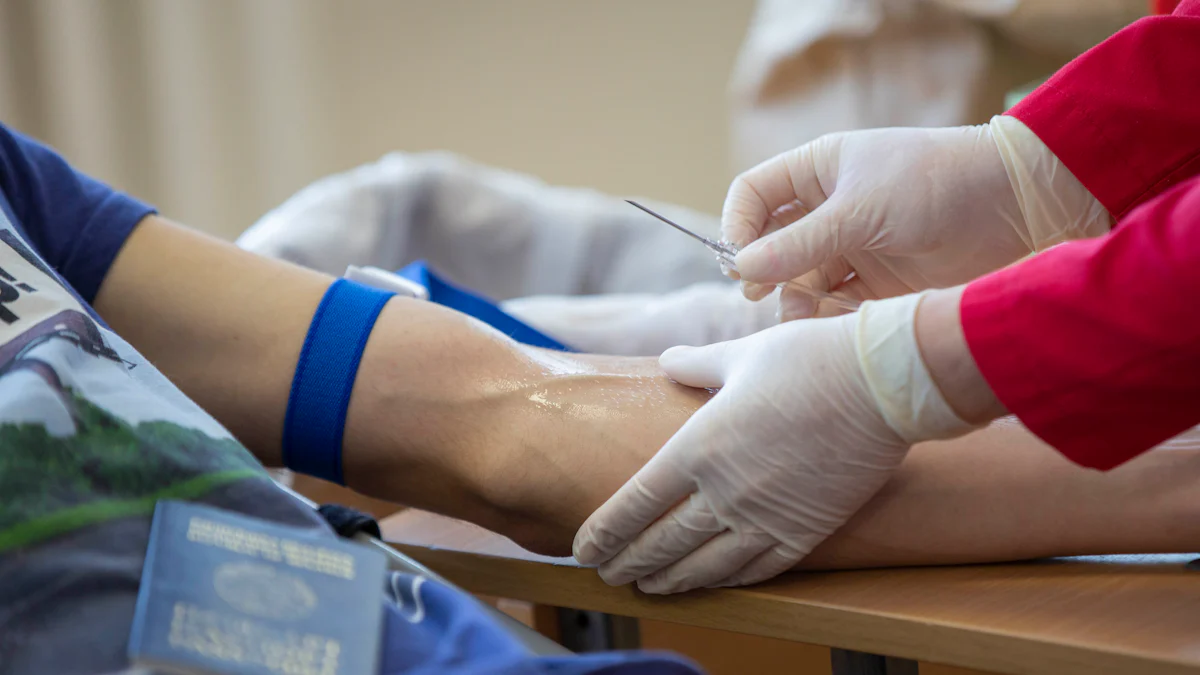
Patient safety is paramount in healthcare, with statistics showing that 24% of hospital patients experience adverse events during their stays. The introduction of hands-free tools presents a revolutionary approach to enhancing safety measures. This blog delves into the significance of these hands-free tools, their impact on infection control, and their role in improving overall healthcare efficiency.
Benefits of Hands-Free Tools

Enhancing infection control measures is a crucial aspect of healthcare settings, and hands-free tools play a pivotal role in achieving this goal. By reducing surface contact, these tools effectively minimize the risk of germ transmission between individuals. Additionally, by minimizing cross-contamination, healthcare facilities can maintain a hygienic environment that promotes patient safety.
Moreover, the implementation of hands-free tools leads to significant improvements in efficiency within healthcare workflows. With faster access to tools, healthcare professionals can expedite their tasks and provide timely care to patients. This streamlined approach not only enhances productivity but also ensures that critical procedures are carried out promptly.
In surgical settings, where maintaining sterility is paramount, hands-free tools offer unparalleled benefits. They enable healthcare providers to perform intricate procedures with precision while adhering to strict aseptic techniques. Furthermore, in general healthcare environments such as patient rooms and common areas, the use of hands-free tools contributes to a safer and more sanitized space for both patients and staff.
The integration of hands-free tools aligns with the overarching objective of reducing healthcare-associated infections and improving overall patient safety. By leveraging these innovative solutions, healthcare facilities can create a conducive environment that prioritizes hygiene and minimizes the spread of pathogens.
Applications in Healthcare
In healthcare settings, the utilization of hands-free tools extends beyond surgical environments to encompass various applications that enhance patient safety and operational efficiency.
Surgical Settings
Maintaining Sterility
Maintaining sterility in surgical settings is paramount to prevent infections and ensure successful procedures. By implementing hands-free tools, healthcare professionals can uphold a sterile environment by minimizing direct contact with surfaces. This approach reduces the risk of contamination and enhances the overall safety of both patients and medical staff. With precise tools at their disposal, surgeons can focus on intricate procedures without compromising sterility protocols.
Enhancing Precision
Precision is crucial in surgical interventions to achieve optimal outcomes for patients. Hands-free tools play a vital role in enhancing precision by providing healthcare providers with accurate and reliable instruments. These tools enable surgeons to perform delicate maneuvers with confidence, leading to improved surgical results and better patient recovery rates. By eliminating manual handling of instruments, hands-free tools contribute to smoother procedures and reduced margin for error.
General Healthcare Environments
Patient Rooms
Patient rooms are key areas where infection control measures are essential to safeguard patient well-being. Through the integration of hands-free tools, healthcare facilities can promote hygiene and reduce the spread of germs within patient rooms. From monitoring equipment to bedside essentials, these tools facilitate efficient care delivery while minimizing the risk of cross-contamination. By incorporating hands-free solutions in patient rooms, healthcare providers create a safer environment that prioritizes patient safety.
Common Areas
Common areas within healthcare facilities serve as hubs for patient interactions and medical activities. The use of hands-free tools in these spaces contributes to maintaining cleanliness and preventing the transmission of pathogens among individuals. From touchless dispensers to automated cleaning systems, these tools streamline operations while upholding stringent hygiene standards. By leveraging hands-free technology in common areas, healthcare institutions foster a culture of safety and well-being for both patients and staff.
Impact on Patient Safety

When it comes to patient safety, the integration of hands-free tools in healthcare settings plays a pivotal role in minimizing risks and enhancing overall well-being. By reducing the occurrence of healthcare-associated infections, these innovative tools contribute significantly to maintaining a safe environment for both patients and healthcare professionals.
Lowering pathogen transmission is a critical aspect of infection control within healthcare facilities. Through the utilization of hands-free tools, the direct contact with contaminated surfaces is minimized, thereby decreasing the likelihood of germ spread. This proactive approach not only mitigates infection risks but also fosters a hygienic setting that prioritizes patient safety above all else.
Improving patient outcomes is another key benefit derived from the implementation of hands-free tools. By reducing the transmission of pathogens, these tools create a safer environment that supports better recovery rates and overall well-being for patients. The emphasis on hygiene and infection control through hands-free technology enhances the quality of care provided, leading to more positive outcomes and improved patient satisfaction.
Promoting aseptic techniques is essential in upholding sterile procedures and ensuring optimal safety standards in healthcare settings. Hands-free tools play a crucial role in supporting these practices by providing healthcare professionals with reliable instruments that minimize contamination risks. By enhancing overall safety measures, these tools enable medical staff to focus on delivering high-quality care without compromising on hygiene protocols.
Maintaining patient safety through the integration of hands-free tools is paramount in healthcare settings. The benefits of these innovative solutions extend beyond infection control to enhancing operational efficiency and promoting a culture of hygiene. By reducing the risk of cross-contamination and improving workflow processes, hands-free tools play a pivotal role in ensuring optimal care delivery. Looking ahead, future developments in hands-free technology are poised to further revolutionize healthcare practices, emphasizing the importance of continuous advancements in patient safety measures. Healthcare facilities should prioritize the adoption of hands-free tools to uphold the highest standards of safety and quality care for all patients.
